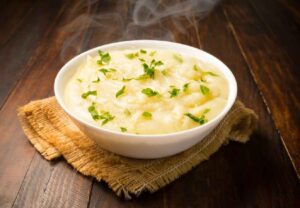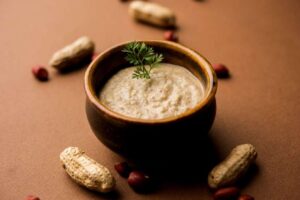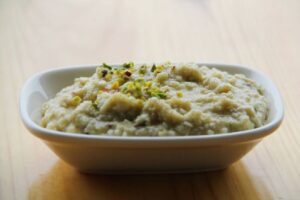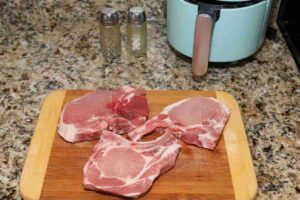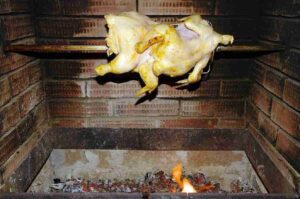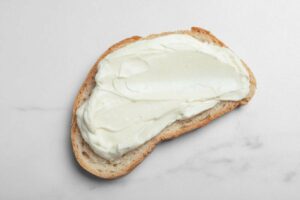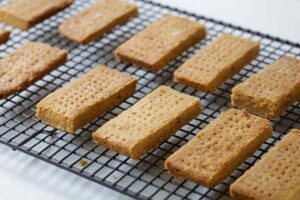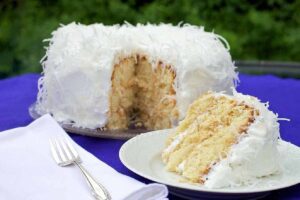Indulge your taste buds in the heavenly delight of Kheeranand, a traditional Indian dessert that will transport you to a realm of pure bliss! Made with love, expertly crafted, and bursting with an array of aromatic flavors, this creamy rice pudding is a true culinary masterpiece.
Kheeranand, also known as Kheer, is a close part of Indian festivities and celebrations. Whether it’s a birthday party, a wedding, or a religious gathering, no festive occasion is complete without this sweet delight. As you take your first spoonful, the velvety texture and rich essence of saffron will envelop your palate, leaving you craving for more.
Passed down through generations, this enchanting recipe holds the secret to perfection. Slowly cooked in a concoction of milk, fragrant spices like cardamom, and garnished with crunchy nuts, Kheeranand is a culinary marvel that will leave you mesmerized.

Kheeranand Recipe
Equipment
- Heavy-bottomed pan or kadai
- Wooden Spoon or Spatula
- Mixing Bowls
- Ladle
- Small saucepan (if using saffron)
- Serving bowls or glasses
Ingredients
- 1 cup Basmati rice
- 2 cup whole milk
- 1/2 cup sugar
- 1/4 cup chopped mixed nuts
- 1/4 cup raisins
- 1/2 tbsp cardamom powder
Instructions
- Soak basmati rice for 15-20 minutes.
- Boil milk in a heavy bottom pan.
- Add soaked rice, sugar, and cardamom and cook on low flame till rice is cooked and milk thickens.
- Garnish with nuts and saffron and serve chilled.
Video
Notes
- Use full-fat milk for a richer and creamier texture.
- Do not overcook the rice, otherwise it will become mushy.
- Add the sugar gradually and stir until it dissolves completely.
- You can add other nuts and dried fruits, such as pistachios, walnuts, and raisins, to the kheer.
- If you want a thicker kheer, add a tablespoon of cornstarch or rice flour mixed with a little milk.
- Kheer Anand can be served hot or cold.
Table of contents
The history and significance of Kheeranand
Kheer is a sweet rice pudding that is popular in the Indian subcontinent and beyond. It is typically made by boiling milk, sugar or jaggery, and Savoury rice, although rice may be substituted with one of the following: deals, bulgur wheat, millet, tapioca, vermicelli, or sweet corn. It is typically flavored with desiccated coconut, cardamom, raisins, saffron, cashews, pistachios, almonds, or other dry fruits and nuts.
The history of Kheer can be traced back to ancient India. The first mention of kheer is found in the Rig Veda, a collection of Hindu hymns that dates back to 1500-1200 BC. Kheer is also mentioned in the Mahabharata and the Ramayana, two of the most important epics in Hindu literature.
Kheer has a significant place in Indian culture and religion. It is often served as a prasad (offering) to deities in temples. Kheer is also a popular dish for festivals and special occasions, such as weddings and birthdays.

Health benefits of Kheeranand’s key ingredients
Kheeranand, being a beloved dessert across India, has evolved into various regional variations, each with its unique twist. Let’s explore some of these delightful variations:
1. Chawal ki Kheer
A classic version of kheeranand made with basmati rice, milk, and sugar, and flavored with cardamom and saffron. It is the most commonly prepared variation and is enjoyed throughout the country.
2. Sabudana Kheer
A popular variation made with tapioca pearls, milk, sugar, and flavored with cardamom. It is often prepared during religious fasting periods and is loved for its creamy and comforting texture.
3. Vermicelli Kheer
Vermicelli is used instead of rice in this variation, resulting in a delicate and lighter version of kheeranand. It is often garnished with roasted nuts and raisins for added flavor and texture.
4. Poha Kheer
Made with flattened rice flakes, this variation has a unique texture and a subtle nutty flavor. It is often prepared during festivals like Janmashtami and Ganesh Chaturthi.

Stories and legends associated with Kheeranand
Kheeranand can be enjoyed on its own, but there are several ways to elevate the experience and create a truly indulgent dessert affair. Here are some serving suggestions and additions to consider:
1. Garnish with rose petals
For an extra touch of elegance, sprinkle some dried rose petals over the Kheeranand before serving. The subtle floral aroma will enhance the overall sensory experience.
2. Serve with warm gulab jamun
Pairing Kheeranand with warm gulab jamun, a popular Indian sweet, creates a delightful contrast of flavors and textures. The soft and syrup-soaked gulab jamun complements the creamy kheeranand recipe perfectly.
3. Top with caramelized nuts
Elevate the visual appeal and add a delightful crunch by caramelizing some nuts like almonds and cashews. Simply heat them in a pan with a bit of sugar until they turn golden brown and sprinkle them over the Kheeranand.
4. Drizzle with honey
If you prefer a lighter and more natural sweetness, drizzle some honey over the Kheeranand. The delicate floral notes of honey complement the flavors of this traditional dessert beautifully.
Popular festivals and occasions where Kheeranand is traditionally served
Kheeranand holds a special place in Indian culture, and several stories and legends are associated with this beloved dessert. Let’s explore some of these intriguing tales:
Mythological significance
According to Hindu mythology, it is believed that the Kheeranand recipe was one of the favorite dishes of Lord Krishna. It is said that his fondness for Kheeranand was so great that he often played pranks to get extra servings from his mother, Yashoda.
The legend of Akbar and Birbal
Akbar, the Mughal emperor, once challenged his wise advisor Birbal to prepare a dish that could make him feel both cold and hot at the same time. Birbal cleverly prepared a kheeranand recipe infused with cardamom and saffron, which created a unique sensory experience for Akbar.
The Mughal influence
Kheeranand gained popularity during the Mughal era and became an integral part of their royal feasts. The Mughals introduced the use of saffron, nuts, and exotic spices, elevating the flavors and making it a symbol of grandeur and indulgence.

Serving suggestions and accompaniments for Kheeranand
While the Kheeranand recipe is undeniably a treat for the taste buds, it also offers several health benefits due to its key ingredients. Let’s take a closer look at the nutritional advantages:
Basmati Rice
Basmati rice is a good source of carbohydrates and provides energy. It is also low in fat and cholesterol, making it a healthier choice compared to other rice varieties.
Milk
The primary ingredient in the Kheeranand recipe, milk is an excellent source of calcium, protein, and essential vitamins. It promotes bone health, aids in muscle growth, and supports overall well-being.
Saffron
Apart from adding a distinct flavor and vibrant color, saffron is known for its antioxidant properties. It has been used in traditional medicine to improve digestion and enhance mood.
4. Cardamom
This aromatic spice not only adds a delightful fragrance to Kheeranand’s recipe but also offers numerous health benefits. It aids in digestion, helps detoxify the body, and may even help lower blood pressure.
Frequently Asked Questions (FAQs)
Kheer is a traditional Indian rice pudding made with milk, sugar, and rice. It’s flavored with cardamom, and saffron, and garnished with nuts like almonds and pistachios.
Basmati rice is commonly used for Kheer due to its fragrance and texture, but you can use other types like jasmine or even Arborio rice for a creamy texture.
Kheer can have a range of consistencies, from thick and creamy to more liquidy. The ideal consistency varies from person to person, so adjust the milk and cooking time to your preference.
Yes, you can make dairy-free versions of Kheer using almond milk, coconut milk, or other plant-based milk alternatives.
Kheer can be enjoyed both hot and cold. Some prefer it warm, while others like it chilled, especially during hot weather.

